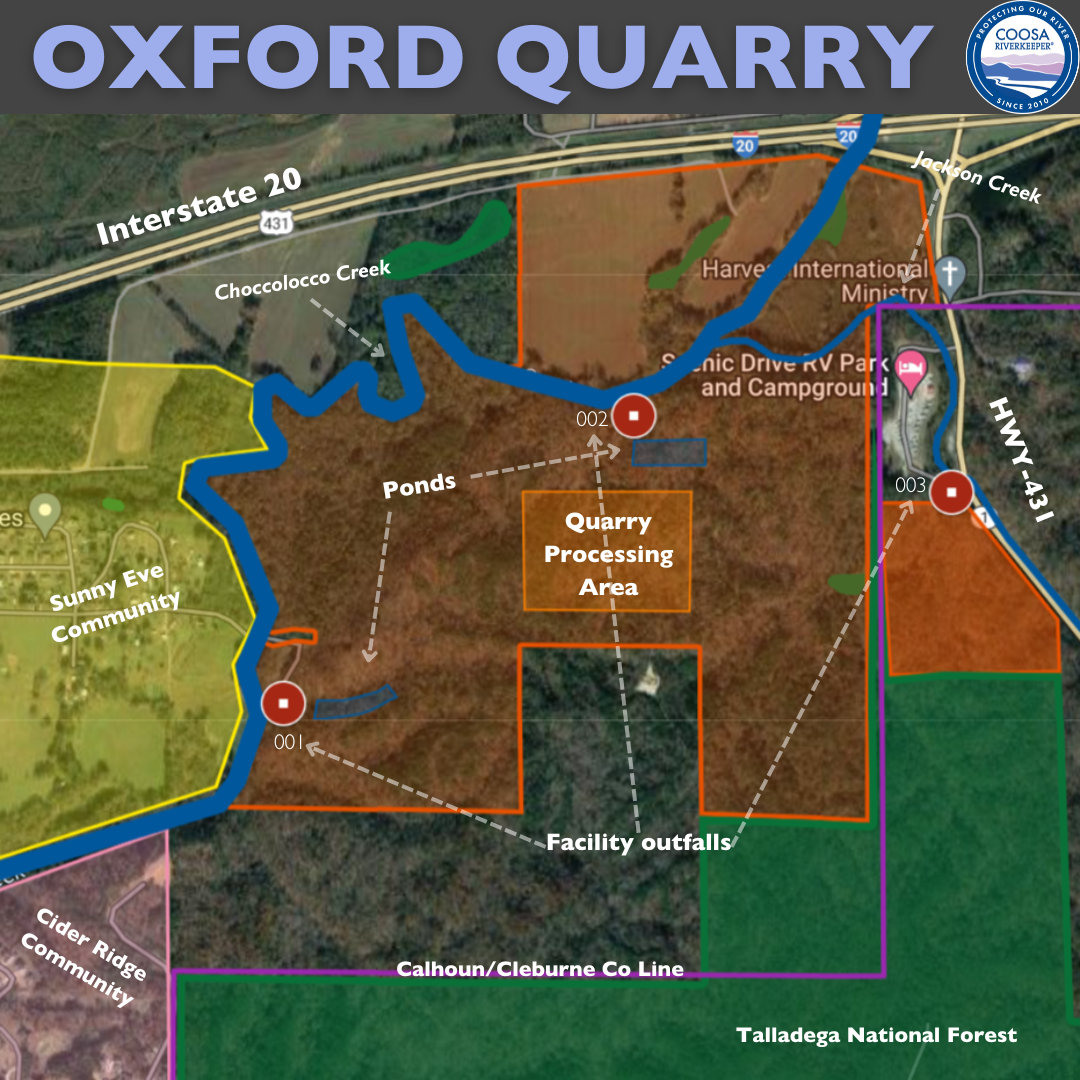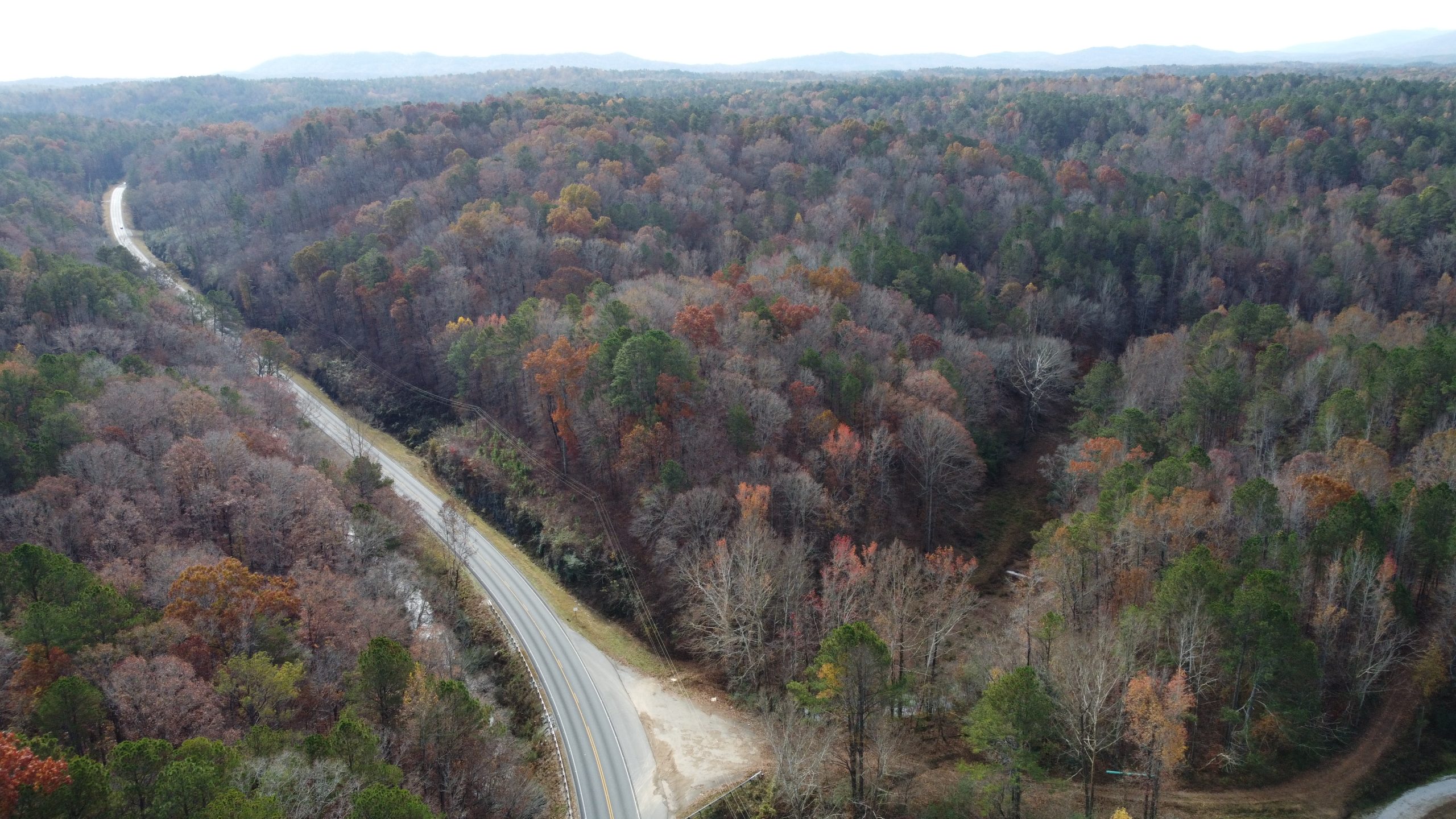The proposed 431 Quarry near Oxford has stirred significant concern among conservationists, particularly us at Coosa Riverkeeper. The 350-acre quarry (set to be operated by Pillar Materials, LLC) has the potential to impact water quality, local wells, and the overall quality of life for the communities in the surrounding areas. As the public hearing approaches, citizens must voice their concerns and be informed about the potential impact of the quarry on the environment and public health.
Permitting Process
Pillar Materials, LLC, has applied for Air Permits for limestone crushing, screening, and conveying circuits. The company has also sought a National Pollutant Discharge Elimination System (NPDES) Permit for discharges into Choccolocco Creek and Jackson Creek. The Alabama Department of Environmental Management (ADEM) is set to hold a public hearing on January 23, 2024, to discuss these permits.

Water Quality Concerns
Jackson Creek, classified as a tier II stream, is at risk due to the quarry’s discharge. ADEM’s determination that the discharge is necessary for economic development raises concerns about potential adverse impacts. Choccolocco Creek, a tier I stream with impairment statuses including pathogens, PCBs, and Mercury, faces additional threats. The proposed discharge into these water bodies could significantly impact aquatic life, water quality, and the surrounding ecosystems.
The quarry’s expected discharge volume of 528,000 gallons per day, with varying flow rates in different outfalls, poses a serious risk. While the quarry plans larger retention ponds than required, concerns remain about excess sediment entering Choccolocco Creek, potentially carrying harmful pathogens downstream.
Well Concerns
Quarrying activities can disturb the water table, leading to reduced well levels or even causing the wells to dry up entirely. The use of heavy machinery, explosives, and chemicals poses contamination risks, with potential pollutants leaching into the groundwater. Increased sedimentation from the quarry site could affect the clarity and quality of water, impacting wells connected to the local groundwater system.

Traffic & Public Safety Concerns
The increased truck traffic associated with the quarry can contribute to air and noise pollution. The constant noise and safety risks associated with heavy traffic pose potential health hazards for nearby residents, particularly those living close to the roads with heavy traffic.
Threatened and Endangered Species
The proposed quarry poses a threat to aquatic wildlife, particularly the Blue Shiner, a federally listed “Threatened” species native to the Choccolocco Creek watershed. Fluctuating discharge temperatures can impact freshwater aquatic species, influencing their physiology, behavior, and overall well-being. The potential disturbance to habitat conditions could have long-lasting effects on the entire ecosystem.
Noise, Light, and Air Pollution
Quarry operations involve heavy machinery, blasting, and continuous operation, contributing to noise pollution. Artificial lighting during nighttime operations can disrupt natural darkness, affecting the habits of nocturnal wildlife and causing discomfort for residents.
Dust generated by quarries can have severe health effects, including silicosis, pulmonary disease, and cardiovascular issues. Residents near the quarry could be exposed to these harmful particles carried by prevailing winds, leading to a range of health problems.

The Oxford Quarry Plant poses multifaceted environmental concerns that demand attention and scrutiny. As the public hearing approaches, concerned citizens must make their voices heard and advocate for the protection of water quality, wildlife habitat, and the well-being of local communities. The potential impacts on air and water quality, public safety, and threatened species should be thoroughly evaluated to ensure responsible and sustainable development practices.




